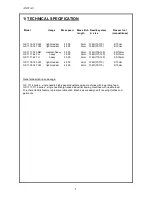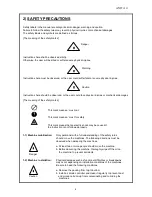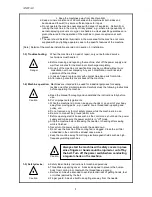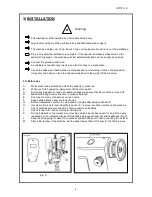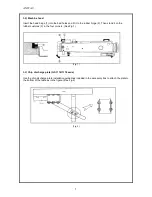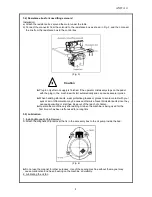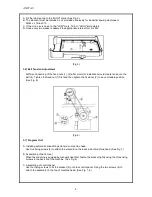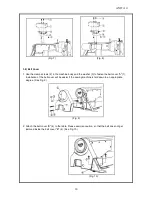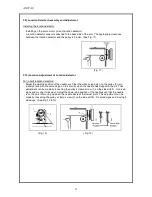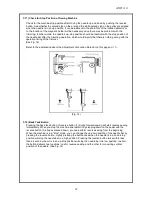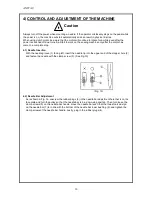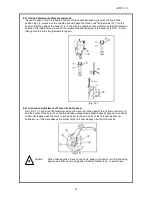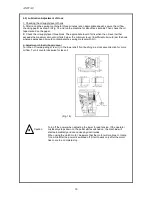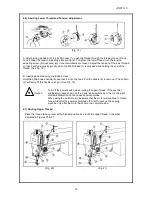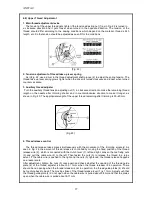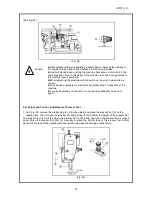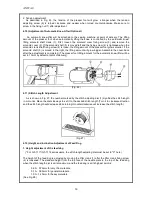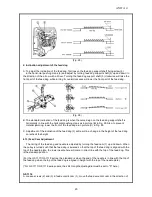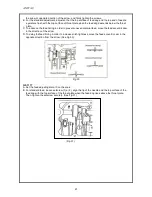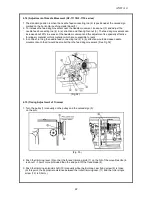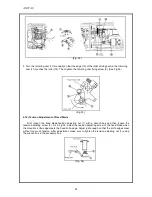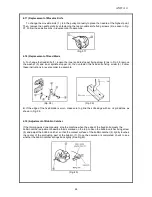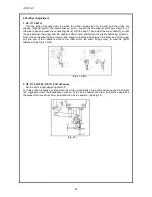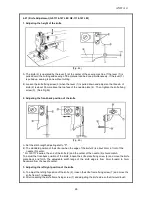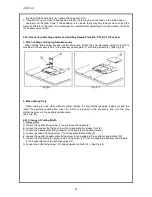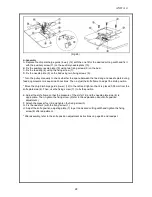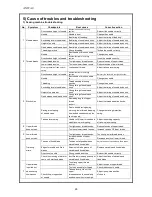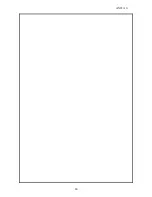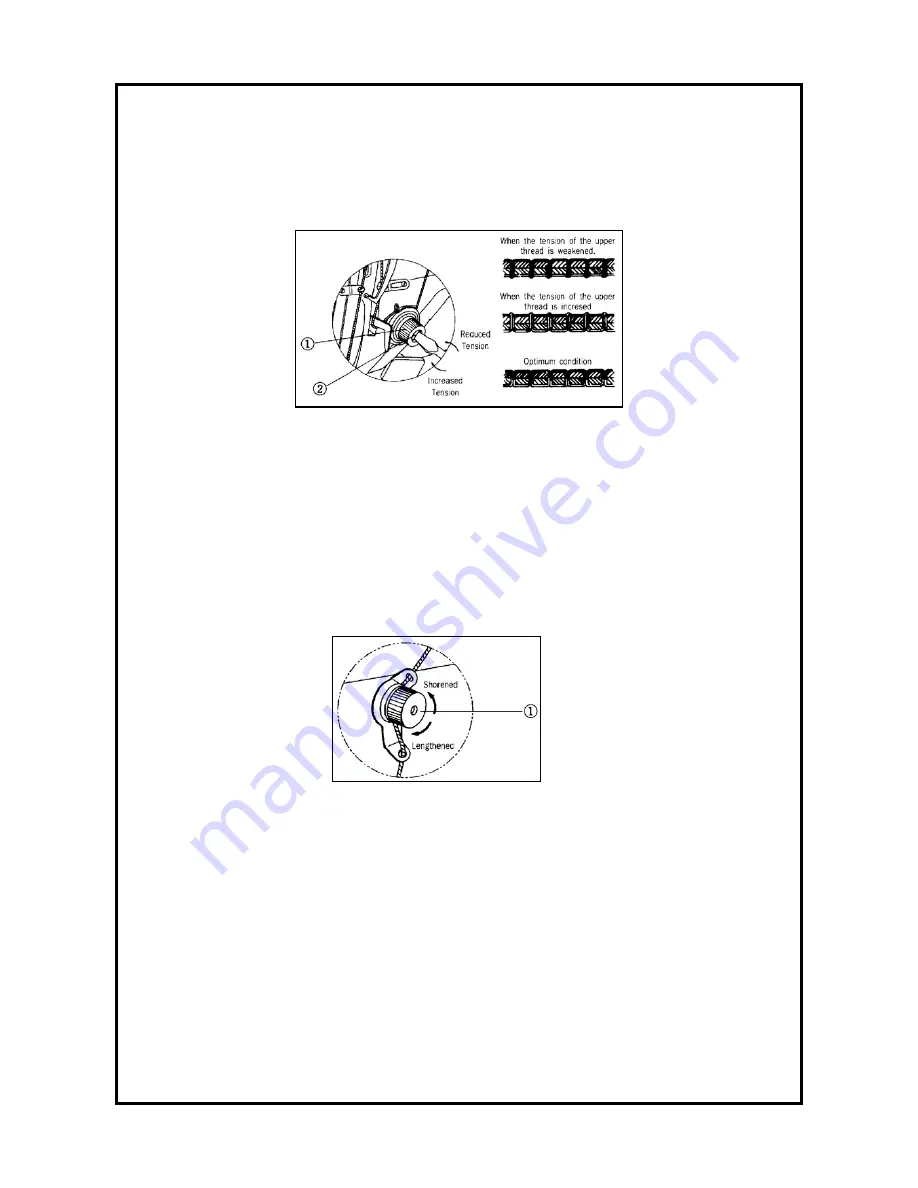
ANITA ©
17
4.8) Upper Thread Adjustment
1. Main thread adjustment device
The tension of the upper thread gets tighter if the tension adjusting nut (1) as in Fig. 22 is turned in
a clockwise direction and it gets looser when turned in the opposite direction. The tension of the
thread should differ according to the sewing conditions which depend on the material, thread, stitch
length, etc. So the tension should be adjusted as seen fit for the conditions.
(Fig. 22)
2. Tension adjustment of thread take up lever spring
As in Fig. 22, use a driver in the thread adjustment shaft groove (2) to adjust the spring tension. The
thread take up lever spring grows tighter when the driver is turned clockwise and looser when turned
counter clockwise.
3. Auxiliary thread adjuster
Turn the auxiliary thread tension adjusting nut (1) in clockwise direction to make the remaining thread
length on the needle after trimming shorter and in counterclockwise direction to make it longer, as
shown in Fig. 23. The appropriate length of the upper thread remaining after trimming is 30~40mm.
(Fig. 23)
4. Thread release control
The thread release takes place simultaneously with the movement of the trimming solenoid. As
seen in Fig. 24, the amount of thread release is controlled by moving the fixed position of the thread
release wire (2), which is connected with the clutch lever (1), left and right. Loosen the two fixing nuts
(3) and pull the cable wire (2) to the left. Then fasten the nuts (3) to release the thread to a large
extent. If the cable wire is pushed to the right and the nuts (3) tightened, the thread release happens
on a lesser scale.
After adjustment, tighten the nuts (3) once again and check whether the opening of the thread guide
plate (4) of the thread adjuster is about 0,5 - 1mm when the thread releaser is in operation. There
should be no opening when the thread releaser is not in operation; the thread guide plates (4) should
be touching back to back. The moving stroke of the thread release lever (1) is 11mm. Adjust such that
the thread guide plate (4) do not open when the cable wire is pulled about 0-8mm and that the plates
open when the cable wire is pulled about 8-11mm.
Summary of Contents for GF-1116 Series
Page 30: ...ANITA 30...

